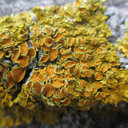Identification of Predominant Phytochemical Compounds and Cytotoxic Activity of Wild Olive Leaves (Olea europaea L. ssp. sylvestris) Harvested in South Portugal.
Raktažodžiai
Santrauka
This study has been aimed at providing a qualitative and quantitative evaluation of selected phytochemicals such as phenolic acids, flavonoids, oleuropein, fatty acids profile, and volatile oil compounds, present in wild olive leaves harvested in Portugal, as well as at determining their antioxidant and cytotoxic potential against human melanoma HTB-140 and WM793, prostate cancer DU-145 and PC-3, hepatocellular carcinoma Hep G2 cell lines, as well as normal human skin fibroblasts BJ and prostate epithelial cells PNT2. Gallic, protocatechuic, p-hydroxybenzoic, vanillic acids, apigenin 7-O-glucoside, luteolin 7-O-glucoside, and rutin were identified in olive leaves. The amount of oleuropein was equal to 22.64 g/kg dry weight. (E)-Anethole (32.35%), fenchone (11.89%), and (Z)-3-nonen-1-ol (8%) were found to be the main constituents of the oil volatile fraction, whereas palmitic, oleic, and alpha-linolenic acid were determined to be dominating fatty acids. Olive leaves methanol extract was observed to exerted a significant, selective cytotoxic effect on DU-145 and PC-3 cell lines. Except the essential oil composition, evaluated wild olive leaves, with regard to their quantitative and qualitative composition, do not substantially differ from the leaves of other cultivars grown for industrial purposes and they reveal considerable antioxidant and cytotoxic properties. Thus, the wild species may prove to be suitable for use in traditional medicine as cancer chemoprevention.



